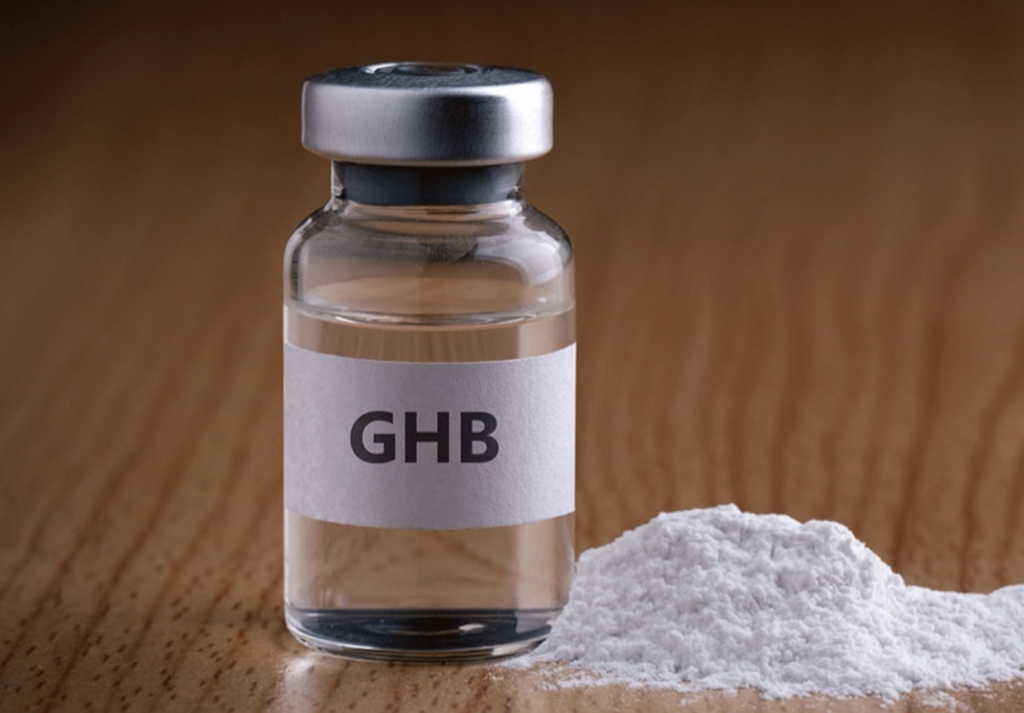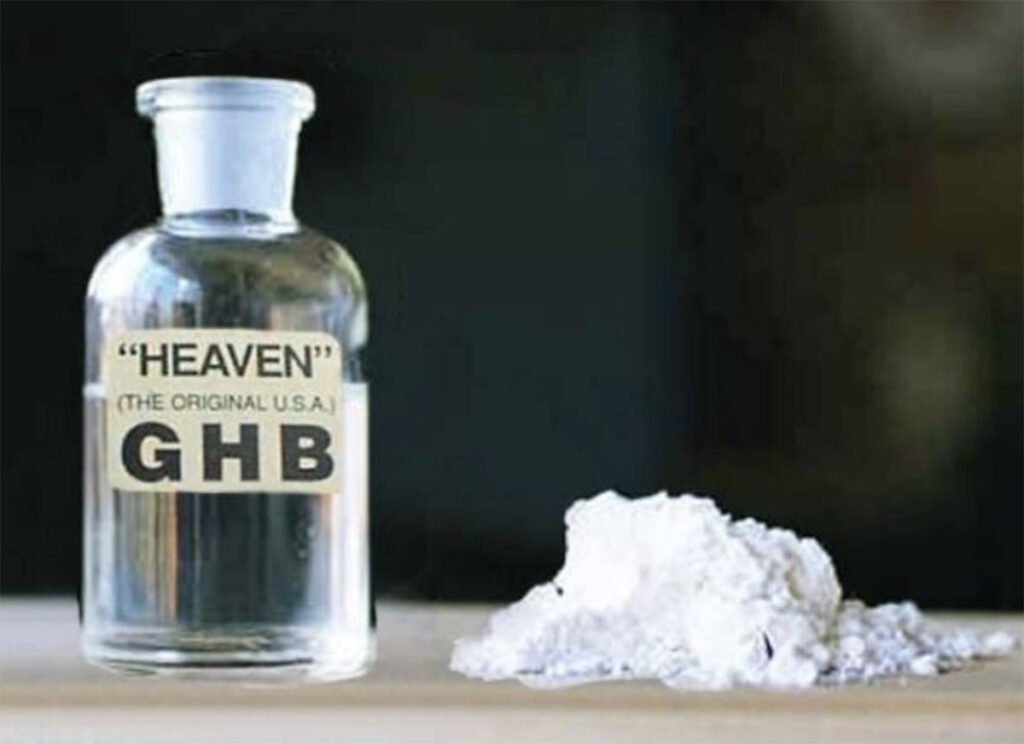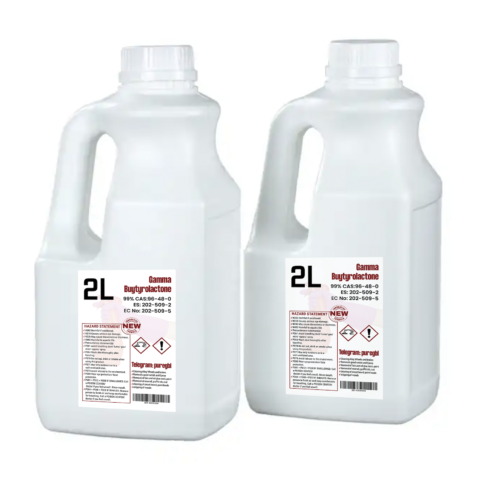What is GHB (Gamma-Hydroxybutyrate) ?
Gamma-hydroxybutyrate (GHB) is a central nervous system depressant that is often referred to by various street names such as “liquid ecstasy,” “G,” or “Gina.” It is a psychoactive substance with effects that can be similar to alcohol and other sedative-hypnotic drugs.
GHB occurs naturally in the human body and is a metabolite of the neurotransmitter gamma-aminobutyric acid (GABA). It was initially developed and used as an anesthetic, but due to its potential for abuse and harmful side effects, it is not approved for medical use in many countries.
GHB is known for its sedative and euphoric effects. It can induce relaxation, drowsiness, and a sense of well-being. However, it is also associated with a range of adverse effects, including nausea, vomiting, dizziness, confusion, hallucinations, seizures, and respiratory depression. The substance has a narrow therapeutic window, meaning that the difference between a desired effect and an overdose is small, making it particularly risky.
GHB is sometimes misused as a recreational drug, and it has been associated with incidents of drug-facilitated sexual assault due to its ability to cause sedation and amnesia. Due to its potential for abuse and associated health risks, GHB is classified as a controlled substance in many countries. Misuse of GHB can be dangerous and is associated with serious health risks, including addiction, overdose, and death. It is crucial for individuals to be aware of the potential dangers and consequences of using GHB recreationally. If someone is struggling with substance abuse or addiction, seeking professional help is recommended.

PROPERTIES OF Gamma-Hydroxybutyrate (GHB)
GHB, or Gamma-Hydroxybutyrate, is a naturally occurring substance found in the human central nervous system. It is also a drug with psychoactive effects, which has led to its use both medically and recreationally.
Chemical Structure:
GHB has the chemical formula C4H8O3. It is a simple short-chain fatty acid that crosses the blood-brain barrier and acts as a depressant on the central nervous system.
Medical Use:
In some parts of the world, GHB is used medically for the treatment of narcolepsy, a sleep disorder that causes excessive sleepiness and daytime sleep attacks. It helps to regulate the sleep-wake cycle and reduce symptoms of narcolepsy.
Recreational Use:
Recreationally, GHB is often used for its euphoric and sedative effects. It can increase sociability, enhance sexual experiences, and induce a state of relaxation. However, these effects can vary greatly depending on the dose, the user’s individual physiology, and the presence of other substances.
Legal Status:
Due to its potential for abuse and its use as a date rape drug, GHB has been classified as a controlled substance in many countries. Its possession, manufacture, and distribution are often subject to legal penalties.
Safety Profile:
The use of GHB carries significant risks. The margin between a recreational dose and an overdose is very narrow. Overdose can lead to nausea, dizziness, drowsiness, agitation, respiratory depression, loss of consciousness, and even death, particularly when combined with alcohol or other depressants.
Dependence and Withdrawal:
Regular use of GHB can lead to physical and psychological dependence. Withdrawal symptoms can be severe and may include insomnia, anxiety, tremors, and, in extreme cases, hallucinations and seizures.
Conclusion:
While GHB has some legitimate medical uses, its potential for abuse and the serious health risks associated with its use make it a substance that should be used with extreme caution. Always consult with a healthcare professional before starting any new medication or substance.

GHB Vs GBL
GHB (Gamma-Hydroxybutyrate) and GBL (Gamma-Butyrolactone) are two substances that, while chemically distinct, have closely related properties and effects. Below is a comparative analysis of these two compounds:
Chemical Structure:
- GHB is a naturally occurring neurotransmitter and a psychoactive drug with the chemical formula C4H8O3.
- GBL is a chemical compound that is not naturally occurring in the body, characterized by the formula C4H6O2.
Legal Status:
- GHB has been classified as a controlled substance in many countries due to its potential for abuse and its use as a date rape drug.
- GBL, on the other hand, is considered a prodrug of GHB and can be legal in some jurisdictions for industrial use but is regulated when intended for human consumption.
Effects:
- Both GHB and GBL act on the central nervous system, producing effects that can include euphoria, increased sociability, sedation, and amnesia.
- GHB’s onset of action is typically slower compared to GBL, which is rapidly converted into GHB upon ingestion and can have a quicker, more intense effect.
Usage:
- GHB is used medically in some parts of the world for the treatment of narcolepsy and is sometimes used illicitly as a recreational drug or performance enhancer.
- GBL is primarily an industrial solvent but is also consumed recreationally or as a performance enhancer after its conversion to GHB in the body.
Safety Profile:
- Abuse of either GHB or GBL can lead to serious side effects including nausea, dizziness, drowsiness, agitation, respiratory depression, loss of consciousness, and even death, particularly when combined with alcohol or other depressants.
- The narrow margin between the recreational dose and the overdose for both substances makes them particularly dangerous without precise dosing.
Dependence and Withdrawal:
- Both substances have the potential for psychological and physical dependence.
- Withdrawal symptoms may include insomnia, anxiety, tremors, and, in severe cases, hallucinations and seizures.
While GHB and GBL share some similarities, their legal status, usage, and the intensity of their effects differ significantly. Extreme caution should be exercised with both substances due to the high risk of overdose, dependency, and withdrawal syndromes.




